Technology Exchange
Induction hardening
Application of high frequency quenching
In the manufacture and production of mechanical equipment such as automobiles and machine tools, there are many transmission mechanism workpieces that need to bear large loads and frequent start and stop. Therefore, the surface needs to have high hardness, strength and wear resistance. It also needs better toughness. For example: gears, camshafts, valve levers, forward levers, automobile axle shafts, spline shafts, sprockets, optical shafts, guide rails, profiling parts, etc. Therefore, it is necessary to perform surface heat treatment on these workpieces. The traditional surface heat treatments include: surface carburizing and nitriding; carbonitriding; surface quenching. Compared with other heat treatment processes, surface quenching has lower cost, higher efficiency, and deformation. It is small, easier to operate, and has obvious advantages. It is widely used in industrial production.
1. Principle
Induction heating is an advanced metal heating technology and one of the energy-saving and emission-reducing technologies advocated by the country. It uses the induced current generated by the metal conductor under the action of the alternating magnetic field to cause self-heating, and achieve the purpose of heating the metal. It is widely used in many fields such as metal heat treatment, quenching, diathermy, smelting, welding, thermal sleeve, etc. Induction heating has significant advantages such as non-contact, fast speed, high efficiency, simple process, easy to realize automation, and has the advantages of zero emission, no pollution and energy saving, which is of great significance to the development of the national economy.
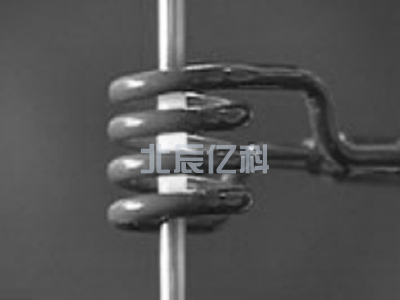
Induction heating
According to the heating frequency, the surface quenching can be divided into: intermediate frequency quenching (<10KHZ), ultrasonic quenching (20-100KHZ), high frequency quenching (>100KHZ); according to the heating part, it can be divided into: outer surface quenching and inner surface quenching (internal Hole); According to the quenching method, it can be divided into: simultaneous heating quenching method and continuous scanning quenching method.
2. The surface quenching and ordinary quenching ratio has the following advantages
1. The surface hardness of the workpiece is high. The surface hardness of the workpiece that is surface-quenched by high- and medium-frequency induction heating is often 2 to 3 units (HRC) higher than that of ordinary quenching. Notch sensitivity is small, and impact toughness, fatigue strength and wear resistance are greatly improved. It is conducive to exert the potential of materials, save material consumption, and increase the service life of parts;
2. Because the workpiece is not heated as a whole, the deformation is small;
3. The heating time of the workpiece is short, and the amount of surface oxidation and decarburization is small;
4. The heat source is on the surface of the workpiece, the heating speed is fast, and the thermal efficiency is high;
5. The equipment is compact, easy to use and good working conditions;
6. Facilitate mechanization and automation;
3. Application of induction heating surface hardening
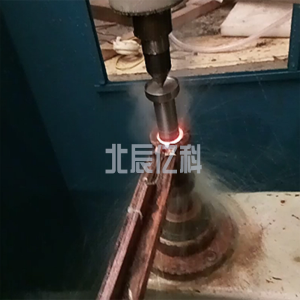 | 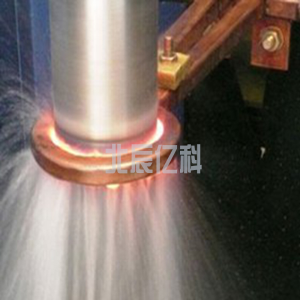 |
| Valve tappet quenching | Shaft quenching |
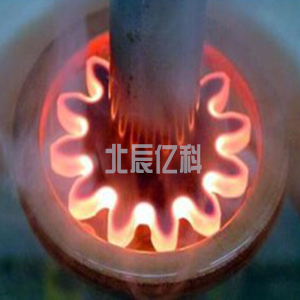 | 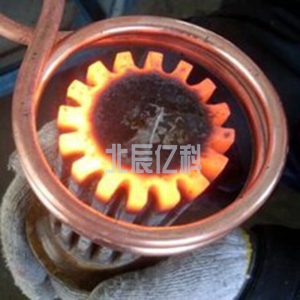 |
| Gear hardening | Spline quenching |
 | 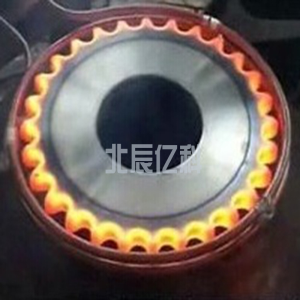 |
| Rail quenching | Large sprocket quenching |
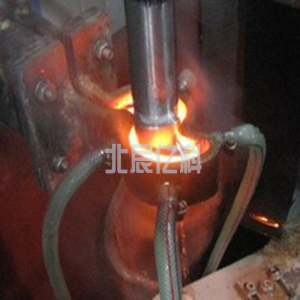 | 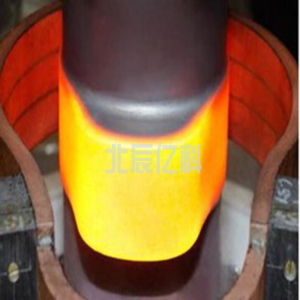 |
| Brake cam S shaft quenching | Quenching of profiling parts |
4. Performance after induction surface quenching
1. Surface hardness: The surface hardness of workpieces that are surface-quenched by high- and medium-frequency induction heating is often 2 to 3 units (HRC) higher than ordinary quenching.
2. Wear resistance: The wear resistance of the workpiece after high frequency quenching is higher than that of ordinary quenching. This is mainly due to the combination of small martensite grains in the hardened layer, high carbide dispersion, high hardness, and high surface compressive stress.
3. Fatigue strength: high and medium frequency surface quenching greatly improves fatigue strength and reduces notch sensitivity. For workpieces of the same material, within a certain range, the fatigue strength increases as the depth of the hardened layer increases, but when the depth of the hardened layer is too deep, the toughness of the core decreases, the fatigue strength decreases instead, and the brittleness of the workpiece increases.
Polaris-etek has a professional quenching process research and development team. According to the process requirements and workpiece drawings provided by the customer, we can provide effective and perfect technical solutions; according to the actual production environment and production conditions of the customer, we can provide the best solution.
The induction heating power supply developed by Polaris-etek has a power coverage of 16-300KW and a frequency coverage of 1-150KHZ to meet the quenching needs of various types of workpieces.


 Scan and follow!
Scan and follow!